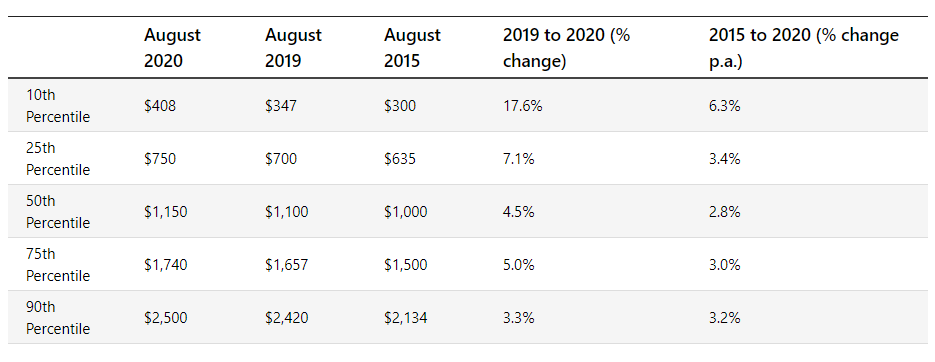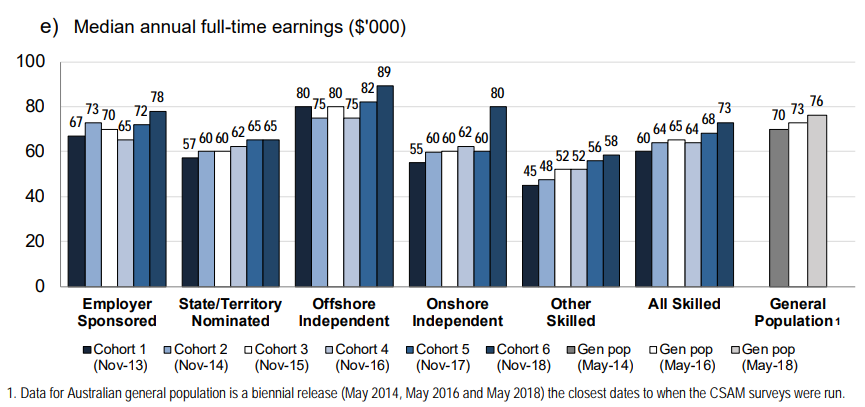Last week, the Coalition-led Joint Standing Committee on Migration recommended radical reforms to Australia’s skilled visa system to make it much easier for businesses to bring foreign workers into Australia.
In a nutshell, the recommendations included:
- Watering down or abolishing labour market testing requirements.
- Lowering business costs and speeding up approval times for importing foreign workers.
- Significantly expanding the skilled occupation list by including almost any role.
- Giving all ‘skilled’ visas a clearer pathway to permanent residency.
- Giving ‘skilled’ foreign workers priority access to flights and hotel quarantine ahead of stranded Australians.
In essence, the implementation of these recommendations would allow almost any Australian business to employ foreign workers over locals, would give them priority access to flights and quarantine over stranded Australians, and would give prospective migrants the explicit carrot of permanent residency.
Labor’s dissenting report slammed the Committee’s recommendations, rightfully labeling them “simply outrageous – ill-conceived and appallingly timed”.
On Sunday, Labor’s Home Affairs spokesperson, Christina Keneally, appeared on ABC’s Insiders program, where she described the recommendations to expand access to foreign workers during a period of high unemployment as “laughable”:
“What do these Liberal members of this committee want to do? They want to make it easier to bring in foreign workers to work as carpenters and electricians and hairdressers and motor mechanics and cooks and chefs”.
“It is almost laughable the extent to which the Liberal DNA comes to the fore – their response is to go to foreign workers and to leave Australian workers behind.”
One recommendation that Labor has taken particular offence to is watering down or abolishing labour market testing, which would enable businesses to import foreign workers without advertising locally first.
My view is that labour market testing is little more than an administrative hurdle that can be easily gamed, as explained by Abul Rizvi:
For years, however, the Government has resisted setting a much higher minimum salary for skilled temporary entry while the unions have insisted on “labour market testing”.
The former is crucial to both protecting job opportunities of Australians and limiting the risks of exploitation of temporary entrants. But the latter, while having a laudable objective, is in practice little more than a bureaucratic charade…
Instead of continuing with the labour market testing charade, Labor should instead demand that the Temporary Skilled Migration Income Threshold (TSMIT) be lifted from its ridiculously low level of $53,900. This TSMIT was $5,900 (10%) below the median income of all Australians in August 2020 ($59,800), which includes unskilled workers (see table).
Having such a low TSMIT explicitly incentivises Australian businesses to hire foreign workers instead of local workers, as well as abrogates the need to provide training.
Labor should also recognise that ‘skilled’ permanent visa holders are also paid less than the general population, according to the Department of Home Affairs’ Continuous Survey of Migrants:
As shown above, full-time skilled visa holders were paid $73,000 in 2018, $3,000 less than the general population (which includes unskilled workers that drag the median down).
Therefore, both the temporary and permanent skilled visa programs are unambiguously undercutting Australian workers, in turn contributing to the economy’s low wage growth and contributing to Australia’s chronic labour underutilsation.
As a first priority, Labor should seek to apply a pay floor equivalent to the 75th percentile of weekly earnings ($90,480 p.a. in 2020 – see above) to both temporary and permanent skilled visa holders.
Doing so would ensure that Australian businesses only hire foreign workers to fill highly skilled professions with genuine labour shortages, while also eliminating the need for labour market testing.



